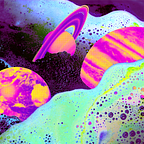The Undeniable Influence of the 1950’s ‘Uber-Manly’ Marlboro Man on Modern Day Tattoo Culture
“He was a bad boy, and bad boys in the ’50s had tattoos.”
After flourishing mainly in the margins of society for the first half of the 20th Century, things started changing in the 1950s. According to sociologist Michael Rees, “tattooing started to regain popularity, first among marginal groups including gang members, bikers and punks and rockers, as symbols of both group allegiance and defiance of conventional society.”
The association between tattoos and masculinity seems to be the shared appeal across these disparate groups. With millions of brave, tattooed Americans flaunting their WWII body art as badges of honour, this cemented the public opinion of tattoos — and their wearers — as courageous and quite possibly, slightly dangerous.
The “tattooed” Marlboro Man campaign ran from 1954 to 1999 and made Marlboro the best-selling cigarette in America.
“Tattoos became a symbol of masculinity — ever notice that the infamous uber manly Marlboro man was inked? That wasn’t a coincidence. He was a bad boy, and bad boys in the ’50s had tattoos,” according to Custom Tattoo Design.
It was in the 1950s that Leo Burnett, a Chicago-based ad agency, was given the task of making Marlboro cigarettes more appealing to men. “The result was the ‘tattooed man’ campaign,” according to Encyclopedia.com. “It involved a series of print ads showing a man with a tattoo on his hand holding a Marlboro. The man would be one of several “manly” types, such as a policeman, a firefighter, a construction worker — or a cowboy.”
Journey through tattoo history at NAAMA’s Medium — our space to explore the ever-changing human relationship to tattoos, chronicle their complex history, and celebrate the empowering future of body art evolution.
